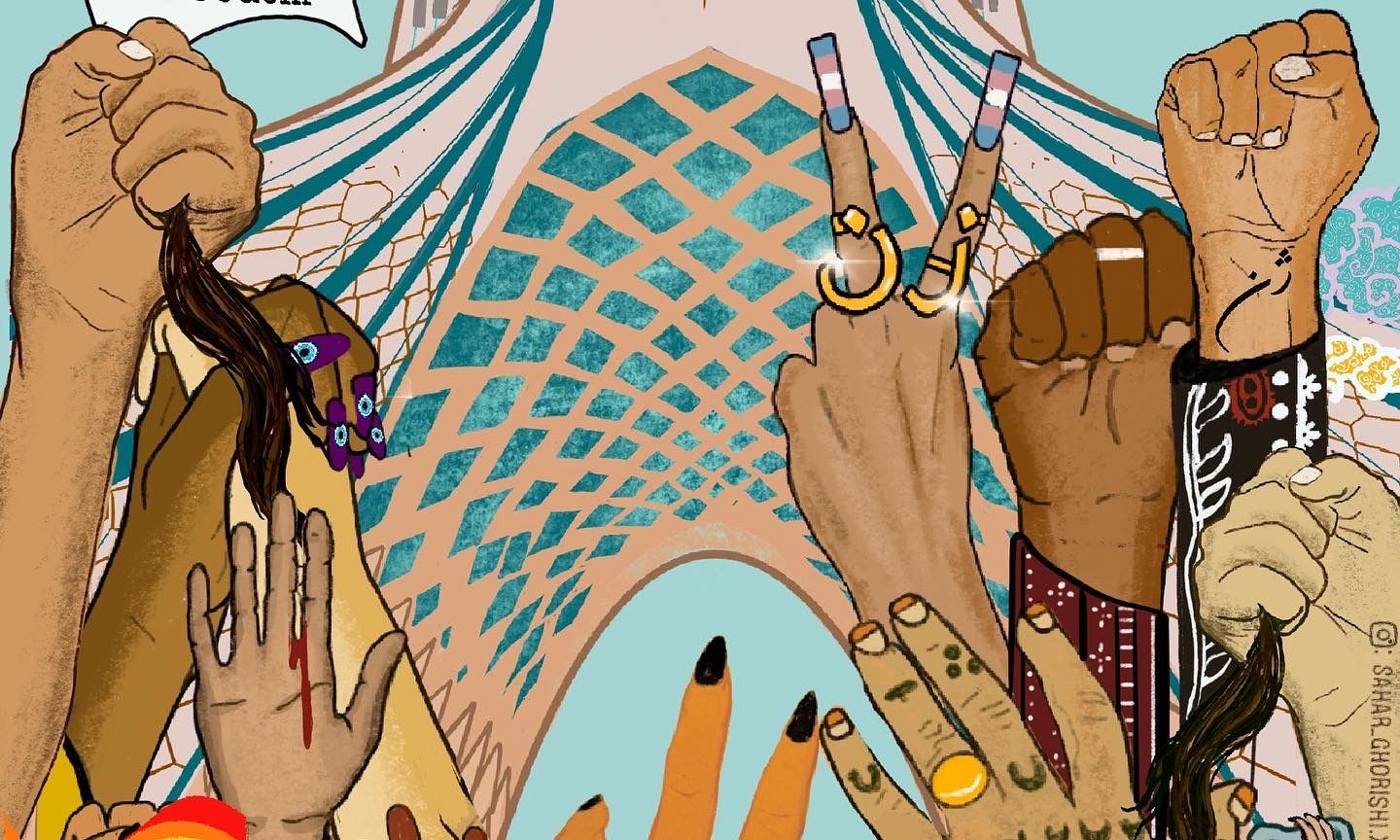The Woman, Life, Freedom protest movement began following the death of Mahsa Amini, who died after being detained by Iran’s morality police
Distortion Media/Adobe Stock
In a new report, the New York-based human rights organisation Artistic Freedom Initiative (AFI) is calling on the government of Iran to “cease the systematic targeting and persecution of artists and activists” that supported the Woman, Life, Freedom protest movement.
The report marks the second anniversary of the death of Mahsa Amini, who died in an Iranian hospital after being detained by the regime’s morality police for allegedly not complying with the country’s hijab regulations.
Her death sparked the Woman, Life, Freedom mass protests in Tehran, throughout Iran and across the globe. The ensuing government crackdown led to the deaths of more than 500 protestors, according to the US-based Human Rights Activists News Agency.
The new report, published by AFI and humanitarian aid group Voices Unbound (VU), is entitled I Create, I Resist—Iranian Artists on the Frontline of Social Change. The document claims that Iran’s Ministry of Culture and Islamic Guidance “significantly increased its efforts to suppress artistic expression and exert control over influential artists” after September 2022. The fallout following Amini’s death is analysed, “offering a sobering account of the severe repression faced by artists since [her death]”.
“Artistic Freedom Initiative and Voices Unbound have released the present report to emphasise the vital role that many Iranian artists played in defending human rights through their involvement in Woman, Life, Freedom and to expose the Islamic Republic’s systematic attacks against them,” says a joint statement.
Both organisations turned to “a variety of sources to identify the laws, policies and practises the Islamic Republic of Iran uses to oppress artists and to uncover the role that many Iranian artists played in defending human rights in this movement”. The Iranian Embassy in London was contacted for comment.
Chapters cover the context to the outbreak of the Woman, Life, Freedom protest movement and “the tactics the government of the Islamic Republic has used to repress free expression, including censorship [and] surveillance”. The report alleges that following the outbreak of the protests the government commissioned a “Celebrity Task Force” to track and sanction artists who supported the activists.
A number of artists feature in the document, including Jinoos Taghizadeh, who fled from Iran to Canada in 2022 after participating in protests. “She believed that Amini’s death in police custody struck a chord with Iranians of all backgrounds because her case was relatable for many who have also experienced arbitrary arrest and police brutality,” says the report. The document also includes 26 works made in response to Amini’s death, including a city mural of Iran’s leaders with red paint, evoking “blood on the hands” of the government.
In the report’s final recommendations, AFI and VU call on the international community to continue exerting pressure on the Iranian government. A list addressed to the Islamic Republic of Iran’s government includes several stipulations including: “Enact laws and policies to protect the rights and freedoms of women and minorities, prohibiting discrimination based on gender, ethnicity, or religion.”
Both organisations also ask other countries to grant asylum and humanitarian visas to artists, cultural workers and other victims fleeing persecution for their involvement in, or defence of, human rights during protests in Iran.

